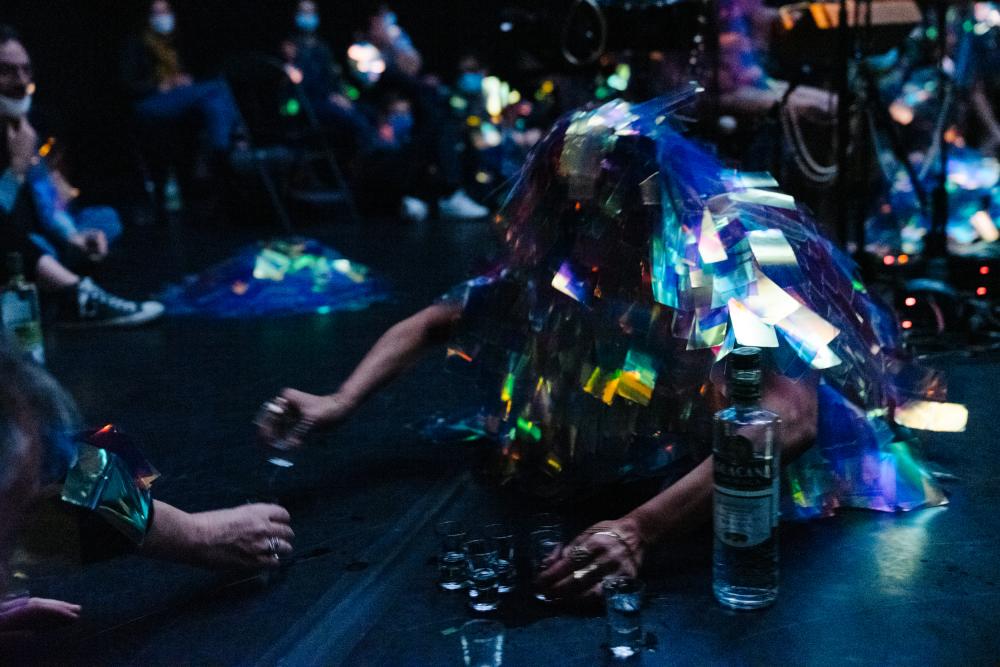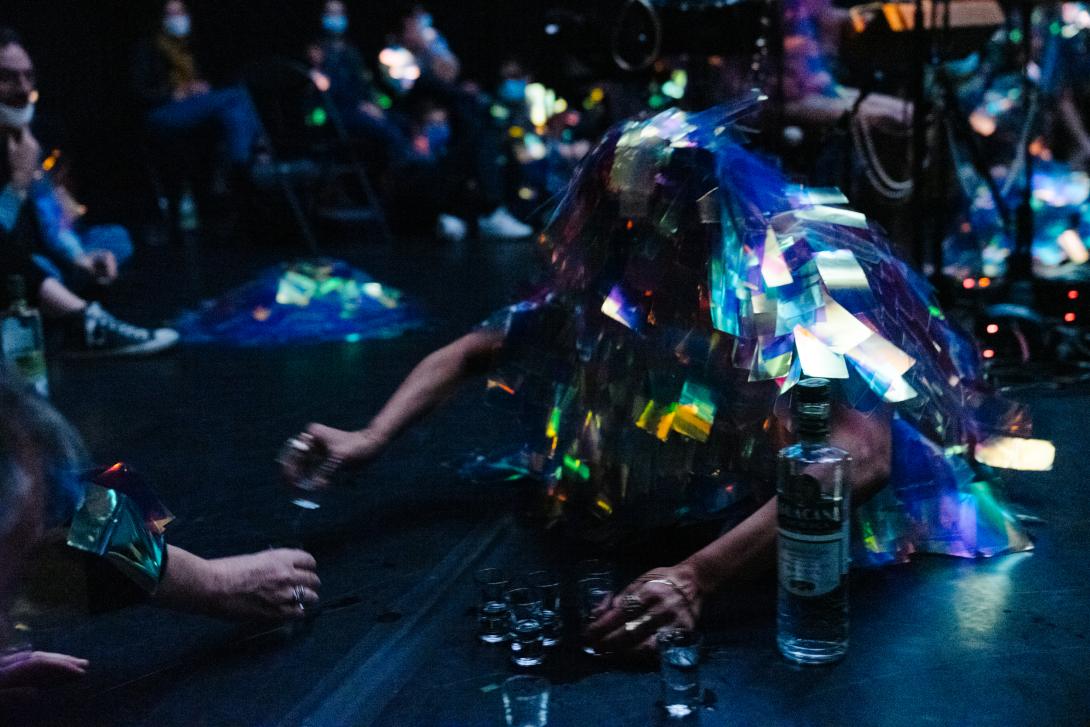| Mon | Tue | Wed | Thu | Fri | Sat | Sun |
|---|---|---|---|---|---|---|
|
1
|
2
|
3
|
4
|
5
|
6
|
7
|
|
8
|
9
|
10
|
11
|
12
|
13
|
14
|
|
15
|
16
|
17
|
18
|
19
|
20
|
21
|
|
22
|
23
|
24
|
25
|
26
|
27
|
28
|
|
29
|
30
|
31
|
|
|
|
|
Read more - La Nuit tombe quand elle veut
"Making the invisible appear”
interview wth Marcelo Evelin & Latifa Laâbissi, by Gilles Amalvi (Festival d'Automne de Paris, 12/2021)
How did this collaboration come about, and the idea of creating not a show but rather a shared moment: a vigil?
Latifa Laâbissi: I think that Isabelle Launay, with whom we work, had already spoken to me about Marcelo's work - having the intuition that our aesthetics could find a dialogue. This idea took hold, and one day I took the plunge and sent him a note. Marcelo replied quite quickly.
Marcelo Evelin: Indeed, we didn't know each other personally, but I had already heard of Latifa, and I sensed a kind of proximity between our worlds. When she sent me this proposal, I immediately accepted. We first spent five days talking, showing each other things, exchanging references. That's when the idea of a vigil came up. We didn't know what it would be like, but we wanted to share a time of attentive listening. This was a few months before the pandemic; so when we started working again, the idea of a vigil seemed to make all the more sense.
L. L.: This idea of a vigil really emerged as an emergency: this is how we want to be together, today, with the public.
An important idea in this principle of the vigil is that of duration - taking time. How did you approach this notion?
M. E.: In the same way that we didn't want to do a "show", we didn't want to do a standard fifty-minute project. Recently, I came across a passage by André Lepecki, talking about "durational performances", performances that work with duration. For him, the experience of duration has nothing to do with time, i.e. the number of minutes or hours that the performance lasts. A durational performance suspends the concept of time, gives it a dimension that is no longer that of the mechanical time of the clock. I have the impression that with this vigil we are touching on this type of relationship to duration. When we tested this project with a few spectators, they told us that they had lost notion of time - that they didn't know if it had lasted twenty minutes or two hours.
How do the different layers - imagery, discursive, fictional – circulate among you during the performance?
L. L.: In terms of circulation, another important notion for us is that of voices: we let ourselves be crossed by voices, we restore voices. Marcelo has said on several occasions that this vigil was a way of making the invisible appear. Our bodies are a kind of wilderness, charged with voices. This crossing of multiple voices makes us augmented bodies: there are three of us on the stage - Marcelo, Tomas Monteiro the musician and me - but in reality we are much more than that.
M. E.: As far as the setting is concerned, we thought of something circular: the audience is with us and around us. And there is a centre: it's an energy centre, a place where the three of us charge. In a way, we call, we invoke these "invisibles", to become the sounding board for multiple presences. For me it's not just a 'sound' vigil, the whole process is very physical.
Is it a matter of making the spectators vibrate?
M. E.: I really like the word "vibrate"...
L. L.: Yes, "vibrate" is a word that has accompanied us a lot. Things are transmitted from body to body, from imagination to imagination. This question was redeployed at the level of the setting : how do we get these bodies to be there with us, without being assigned a place? How can we make them move, be in a reconfigured reception space? Nadia Lauro's work on the set design and lighting helped to clarify the contours of this space and the ways of linking the presences. An important word, between us, is flamboyance: a luminosity that makes these figures lose their contours, creating a vibratory space of contamination.
M. E.: I have the impression that when we are really busy doing something in a very concentrated way, it diffuses, it opens up a space for contemplation. People are free to fall asleep, dream, laugh, cry... I no longer believe in a theatre that tells the audience what to think, how to dream. For me, making art means inviting people to share a time that we don't know exactly what it looks like.
Can you tell me where the title La Nuit tombe quand elle veut comes from?
L. L.: It's the title of a poem by Marie Depussé. It's a night that is not regulated by the curfew, but by our desire to do things together.
M. E.: This title immediately crystallised a lot of things for me; it helped me to think of the night as a dark, clandestine condition. It's a time when you do things in secret... There is a great strength in this night that is not regulated by systems - this autonomous night, like the autonomy of our desire.

